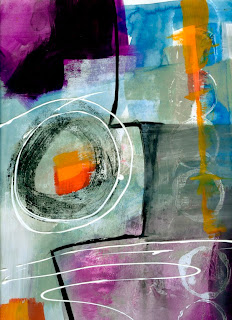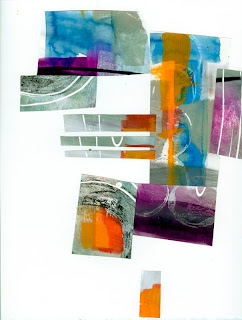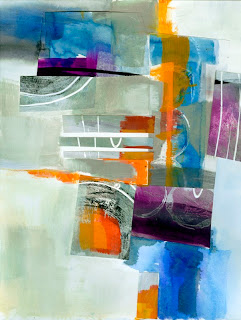I keep sketchbooks, as you may know. These are my visual playgrounds, where I can do whatever I want, and share or not share as I please. Sometimes I work on loose sheets of paper as my sketchbooks, and sometimes I work in spiral-bound books. My sketchbook starts as a series of blank pages, bound or not bound.
This visual journal is something else. It starts out as a book of already-painted pages. The pages inspire further mark-making, as you'll see in this video:
Here are a few page spreads that did not make it into the video:
And a few the you see in progress in the video:
The process of making and then working in this kind of journal has a couple of benefits for freeing your creativity and putting your Inner Critic in her place:
- First, you can be totally experimental in making the papers. They are not Art On The Wall, and they will not be seen as Compositions. They will be folded in half, nested together, and covered with more paint, collage, and drawing. So you can't get too precious about them.
- Second, the journal itself is an ongoing work-in-progress. It gives you an opportunity to exercise your visual muscles without the pressure of Making Art. And this exercise, this practice, will hone your skills, strengthen your art, and expand your visual vocabulary.
- July 19 at CREATE in Somerset, NJ
- August 23 at CREATE in Chicago
- September 9 at Random Arts in Saluda, NC







































